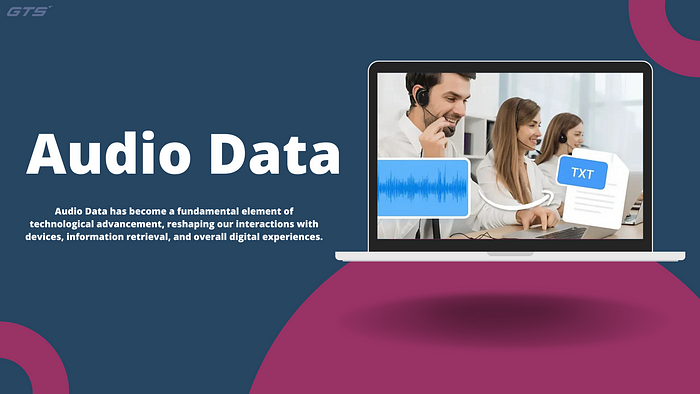Introduction:
Audio Data has become a fundamental element of technological advancement, reshaping our interactions with devices, information retrieval, and overall digital experiences. From facilitating virtual assistants to supporting groundbreaking research in healthcare, the field of audio data research is rapidly progressing. This article examines the most recent trends and innovations propelling this vibrant domain forward.
The Emergence of High-Quality Audio Datasets
A significant factor driving progress in audio data research is the accessibility of high-quality datasets. These datasets, exemplified by those featured in GTS AI’s case study, form the basis for training machine learning models to identify, process, and analyze sound. The availability of high-quality audio datasets ensures that models can effectively manage a variety of real-world situations, enhancing their robustness and reliability.
Notable trends in this area include:
Domain-Specific Datasets: Customized datasets for sectors such as healthcare, environmental monitoring, and entertainment are increasingly prevalent.
Open-Source Audio Repositories: Resources like Google’s AudioSet and Mozilla’s Common Voice offer valuable tools for researchers globally.
Cutting-Edge Audio Processing Techniques
The domain of audio data research is experiencing significant advancements in processing methodologies, including:
Deep Learning Models: Neural networks, including convolutional neural networks (CNNs) and recurrent neural networks (RNNs), are being refined for applications such as speech recognition and sound classification.
Self-Supervised Learning: Utilizing extensive, unlabeled audio datasets for pre-training models has markedly decreased the dependence on annotated data.
Real-Time Audio Analysis: Innovations in edge computing are allowing devices to process audio data locally, thereby minimizing latency and improving privacy.
Applications of Audio Data Research.
Healthcare Innovations
The advent of audio-based diagnostic tools is transforming the healthcare landscape. For instance, artificial intelligence models that analyze respiratory sounds are being utilized to identify conditions such as asthma, pneumonia, and even COVID-19.
Improved Accessibility
Research in audio technology is leading to enhanced tools for individuals with disabilities, including real-time captioning for those with hearing impairments and sophisticated text-to-speech systems.
Personalized Entertainment
Audio data is enriching user experiences in entertainment platforms, from adaptive soundscapes in gaming to algorithms that recommend music.
Ethical Considerations in Audio Data Research
As advancements in audio data research continue, ethical issues related to privacy, consent, and bias have emerged as significant concerns. Addressing these challenges requires:
Anonymization Techniques: Ensuring that sensitive information is devoid of identifiable details.
Bias Mitigation: Creating diverse datasets to minimize biases in artificial intelligence models.
Transparent Policies: Establishing clear guidelines regarding data usage to foster trust among users and stakeholders.
Future Directions in Audio Data Research

The future of audio data research holds numerous exciting opportunities, including:
Multimodal Learning: Integrating audio with other data forms, such as video and text, to enhance AI’s contextual comprehension.
Generative AI for Sound: Employing generative models to produce realistic audio for use in media, entertainment, and virtual reality.
Enhanced Spatial Audio: Facilitating immersive experiences in augmented and virtual reality settings.
Conclusion
The domain of audio data research is a vibrant hub of innovation, with extensive implications across various industries. As the quality of datasets, processing techniques, and ethical frameworks continue to advance, the potential for groundbreaking applications will expand. To remain at the forefront of this transformative field, it is crucial to monitor emerging trends and utilize platforms like Globose Technology Solutions for superior audio data solutions.

Comments on “Trends and Innovations in Audio Data Research”